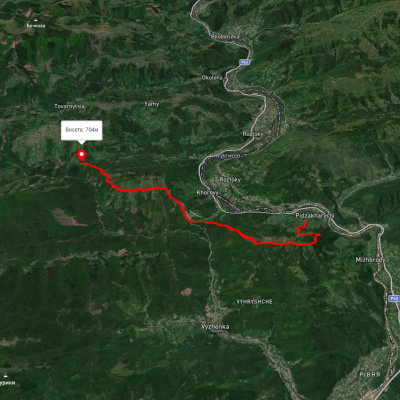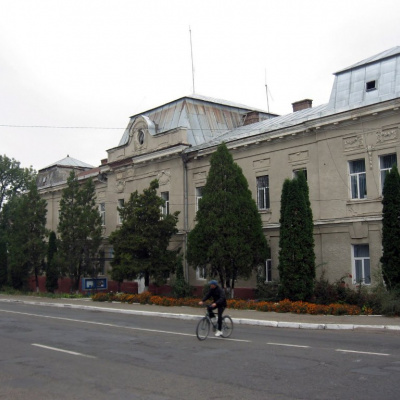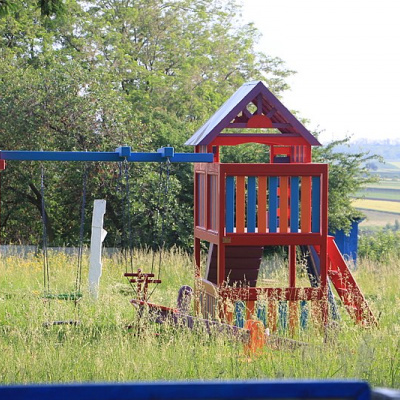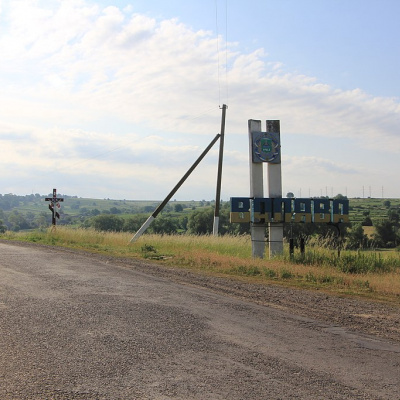Valyava
The village of Valiava could have gotten its name from the Romanian word vale, meaning valley. Valiava is a settlement located in a wide valley near the Voluvka stream. The village was mentioned in 1413, as well as the neighboring town of Kitsman, in the charter of Alexander the Good.
Valyava is located in the Kitsman district, Chernivtsi region. The distance to the regional center of Chernivtsi is 25 km. The population is 1,560 inhabitants.
The wooden Assumption Church of 1778 is located in the center of Valiava. The building is based on an archaic type of three-domed church with square log cabins covered with a high pitched roof with a large overhang covering the low cut pyramidal tops of the altar and the narthex. Unlike classical examples of "hut" type churches, the more developed top of the nave cuts through the roof massif, protruding from it as a wide quadrangle, which turns into an octagon with a low hipped end crowned with a dome. The church has a pyramidal silhouette. The bell tower, which is characteristic of Ukrainian wooden architecture, is located to the south of the church and was built in the nineteenth century. It is wooden, two-tiered, frame, and covered with wood. The second tier of the bell tower has an arcade for bells. The wide inter-tiered hall and low hipped roof are covered with shingles. The second gable has voice boxes. Throughout its existence, the church was constantly functioning. On the occasion of the 230th anniversary in 2008, restoration work was carried out: the roofs of the church were covered with tin.
In the center of Valiava there is a nineteenth-century residential building (now a kindergarten), and a museum of village history, established in 1985. On the outskirts of the village there is a cross commemorating the abolition of serfdom in 1848.
Valiava is the birthplace of the writer and teacher Vasyl Kishkan (1929-1992), and the famous Romanian writer Olga Koba was born and worked as a teacher here. Honored Worker of Culture of Ukraine Valerii Koshman worked here fruitfully. Maria Prokopets, a candidate of medical sciences, is a native of Valiava.
The village has the following institutions: a post office, a medical facility, a preschool, an educational institution, a club, a library, and a local history museum. The main population is Ukrainians. The villagers are engaged in farming and animal husbandry, entrepreneurial activity and work in various institutions.
Рекомендуємо відвідати в Valyava
Маршрути поблизу Valyava
Які туристичні (пішохідні) маршрути проходять через/біля Valyava?
Пропонуємо пройти такі туристичні (пішохідні) маршрути через/біля Valyava: пер. Німчич - Протяте Каміння





